#tillandsias
Explore tagged Tumblr posts
Text
#naturaleza#markoconk#spain#plantas#flowers#garden#relax#cactus#suculentas#jardin#plantasdeaire#Tillandsias
0 notes
Text
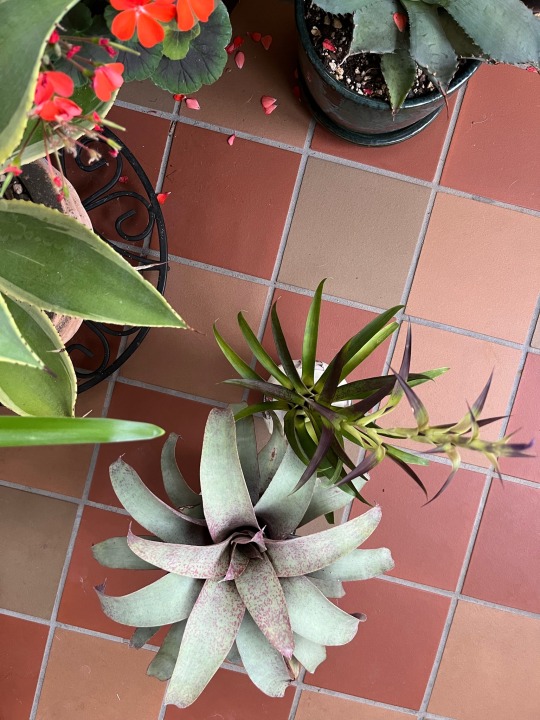
My Vriesea and Tillandsia arrived today. And the Tillandsia has a spike!🪴😍
1 note
·
View note
Text

Amazing. I actually don’t know how to take care of these things but this is a pup from one I bought years ago. It bloomed too and now this one is. Some kind of Tillandsia I guess? Anyway, wild colors!
586 notes
·
View notes
Photo
Love is all
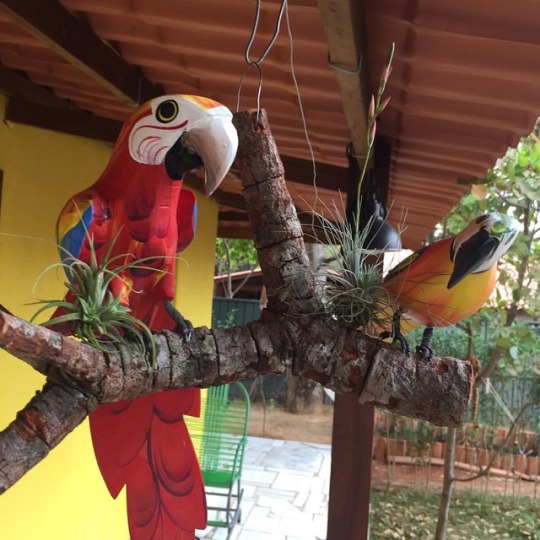
Galho com araras e tillandsias / Macaws and tillandsias on a tree branch #araras #tillandsias #galho #branch #nature #plantasaereas #aerialplants #instaflora #natureza #artesanato #woodhandcraft (em Núcleo Rural Jeriva no Lago Norte)
#branch#plantasaereas#galho#artesanato#araras#nature#instaflora#tillandsias#aerialplants#woodhandcraft#natureza
2 notes
·
View notes
Text
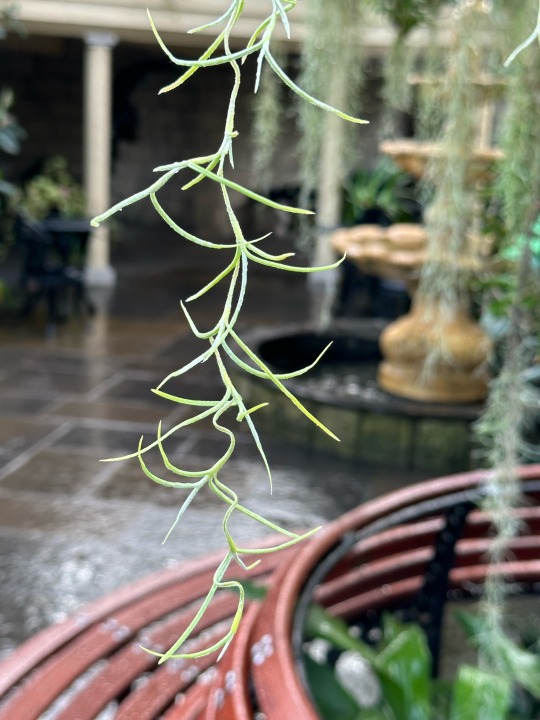
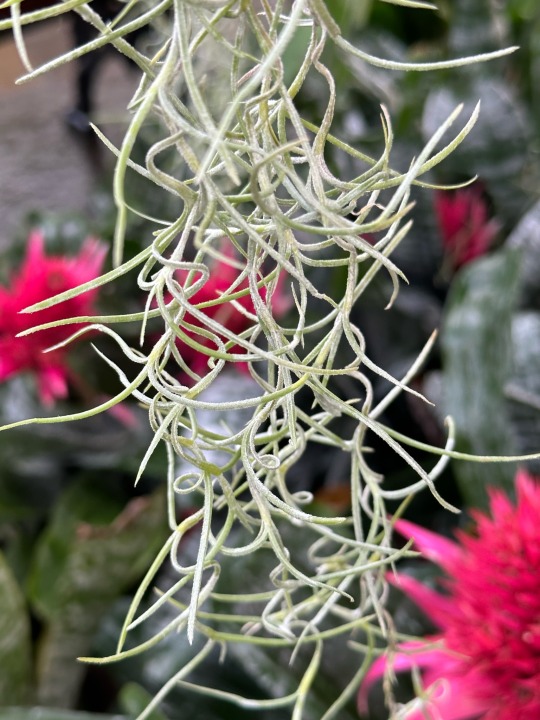
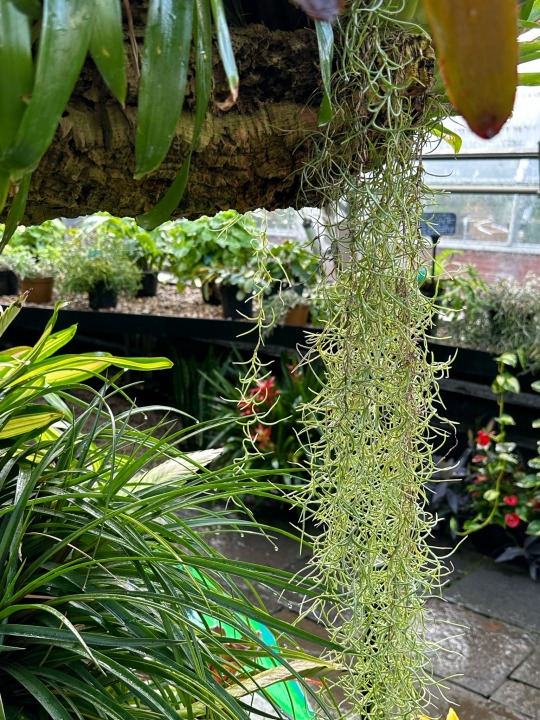

Plant of the Day
Friday 19 January 2024
The Tillandsia usneoides (Spanish moss, grandpa's beard) was thriving in the humid atmosphere of this tropical glasshouse. This epiphyte is native to the forest habitats of the southern United States and some parts of central and South America. The long, cascading stems of silvery green foliage need indirect sunlight and a moist atmosphere as they grow without being rooted in growing media.
Jill Raggett
#tillandsia#Spanish moss#grandpa's beard#epiphytes#plants#horticulture#botanic#botanic garden#inverness#grey foliage#tropical glasshouse#glasshouse
136 notes
·
View notes
Text









Succulents & tillandsia & carnivorous plants
25 notes
·
View notes
Text

Magic in the plant shop🩶
#photooftheday#photo on tumblr#photoblog#beautiful photos#green witch#plants#pretty photo#botanical#greencore#flowers#plant blog#plant magic#plant photography#water plants#photo of the week#green aesthetic#herbalife#plant aesthetic#potted plants#plantblr#cottage witch#witchcore#witch aesthetic#beautiful place#magic#herbal witch#tillandsia#foggy aesthetic#foggy#autumn vibes
18 notes
·
View notes
Text
Archon Quest Chapter V Notes - Act I and Act II

“The victors will burn bright, while the losers must turn to ash.”
Just wanted to do some review before the finale and organize all of the ideas presented so far in each act. Each act’s themes, introduced concepts, main plot, and sub plots as I saw them are summarized, with some denoted speculations. This post contains all AQ content from version 5.0, or Act I and Act II. Noted from versions 5.1 and 5.2 are here.
Spoilers: Well, it’s in the title. You’ve been warned!
Act I: Flowers Resplendent on the Sun-Scorched Sojourn
“Flowers” are frequently used as a metaphor for lives in Genshin (“Flower of Life” artifacts, “The Song Burning in the Embers,” the gardener metaphor from Shadows Amidst Snowstorms)
"Our forebearers carved 'miracles' into obsidian rock, yet future bearers looked upon them and saw 'strength.'" The miracles of the past become the motivations of the present. The limitations of the past become the breakthroughs of today... “
Themes: “No one fights alone”*, legacy, memory, and forgetting*, the meaning of strength, mutualism and partnership between humans and “nature,” the cruelty of war and the Abyss
(My favorite motif of “no one fights alone” is the generosity characters exhibit with food and drinks. C: )
*These themes are overarching to all of Chapter V, but are more prominent in some acts and less in others.
Concepts Introduced:
Ancient Names: A name gifted by the Wayob of an individual tribe to a tribe member. Not everyone gets to be an Ancient Name bearer, and they are essential to the Pilgrimage. Ancient Names are also not unique to each individual, but rather “legacies” that are passed down through generations of Natlanese. Each Ancient Name bearer also holds a feather-shaped obsidian stone, with their Ancient Name (sans vowels) written on it in the Abyss script. It preserves their accomplishments as memories. Ancient Names perish with their bearer if they fall in the Night Warden Wars.

A “flower of life” and her “plume of death.”
The clear analogue to this concept is Vision bearers, who enjoy a certain amount of privilege respective to “ordinary people” in society, though having a Vision can be seen as a blessing or a curse depending on who you ask:
Paimon: ...Then, you're saying this stone doesn't have any actual power? Like, it's not gonna make Paimon super strong or smart? Pacal: None at all, and that is precisely how it exercises its unique value. Kachina: Think of it this way... If you become a hero because the heavens granted you strength, are your triumphs earned or given?
Uthabiti (Resilience): Kachina’s Ancient Name.
Pilgrimage of the Return of the Sacred Flame: A tournament to determine the strongest warriors of the present to fight in the Night Warden Wars. Participation is restricted to Natlanese and consists of two stages, a team stage and an individual stage. In other words, Natlan values both team and individual strength, seeing both as essential to victory.
Night Warden Wars: A battle between the strongest Ancient Name bearers of the Pilgrimage and the advancing Abyss, which Natlan is constantly at war with due to the special circumstance of their Ley Lines.
Saurian companions: Each tribe has a special relationship with a specific Saurian type, and humans live alongside Saurians in Natlan. Saurians are also partners in combat for some Natlanese.
Wayob: The “will” of each tribe that dwells in the Night Kingdom, symbolized by the obsidian totem.
Pyro Archon: In Natlan, humans ascend to this role due to the rules Xbalanque wrote for the nation. Mavuika was also the Archon during the Cataclysm.
Kachina: I do know this, though — even after becoming the Pyro Archon, the person in the position still grows old and requires rest.
Phlogiston: Primordial elemental energy (formally stated in Act IV).
The Sacred Flame: Provides Natlan with protection from the Abyss, fueled by Contending Fire collected from battles during the Pilgrimage. Outlander participation in the Pilgrimage does not generate Contending Fire, hence their being barred from the tournament.
If Ancient Name bearers are analogous to Vision bearers, then are Outlanders in the context of the Pilgrimage analogous to people from outside of Teyvat? If so, could the analog to the Pilgrimage tell us something about the nature of Teyvat? Personally, I think the underlying mechanism of the Vision system and the boon it provides to Celestia lies in this story.
The Ode of Resurrection: A song with the power to resurrect fallen Ancient Name bearers in the Night Warden Wars, provided there is at least one survivor to return from the Night Kingdom. The Pyro Archon steps into the Sacred Flame to retrieve them.
The Night Kingdom: The liminal space between body and mind, life and death. Comparable to the space below the Celestial Nail in “Perilous Trail.” In other words, it’s not quite the Abyss, but rather the “boundary” between the Abyss and Teyvat. In other words, it’s the Ley Lines of Natlan.
Abyssal corrosion/wounds: Technically corrosion is a pretty old concept by now, but in this context we learn about it as a potential cost in Natlan’s war against the Abyss. Corrosion stays in the body and restricts an individual’s ability to participate in things they used to do with ease, let alone participate in the Pilgrimage again.
Here, Abyssal corrosion is a metaphor for injury in the line of battle, which can leave both physical and emotional scars.
Abyssal Pylon: A gate between the Night Kingdom and Teyvat that allows Abyssal creatures to pass into Teyvat.
Main Plot:
This act establishes several key concepts and largely serves as a worldbuilding and set up act. We learn about the shared traditions and customs between the six tribes, which center on the Wayob, Ancient Names, the Night Kingdom, and the meaning behind the “nation of war.”
The Pilgrimage of the Return of the Sacred Flame is being held in the Stadium of the Sacred Flame to collect Contending Fire and send another wave of warriors to the frontlines against the Abyss. Kachina of the Children of Echoes learns to value her will and achieves her dream of winning the tournament; her reward is to fight alongside the strongest warriors in the Night Warden Wars. While she’s away, the Traveler goes with Mualani to the People of the Springs and meets Atea, who sustained an injury from the Abyss in a past Night Warden War. Mualani, the Traveler, Marokau and Hikueru plan a party for Atea at the old hot springs she frequented before her injury and work together to renovate it, but the Abyss attacks the People of the Springs overnight. After finding Atea injured at the old hot springs, the Traveler remembers way back in Mondstadt when they purified Dvalin’s tears and tries that super cool power out again on Atea’s festering injury. Atea reveals to the Traveler and Mualani that her fate is sealed, and she only has a few days left; she leaves them with a “relic” to give to Mavuika, which “embodies fond memories and [her] strength of will.”
“Life is a journey in which there’s no turning back, so forge ahead and don’t hold back.”
Subplots:
Kachina’s struggle to assert her will (strength), which culminates in her defeating Mualani in the tournament
Kachina: "The key to winning is in the strength of the team captain," that's what everyone says. But, uh... the difference in strength between bearers can practically be night and day. Kachina: Mualani, I... I really want to win this time. I want to win this Pilgrimage and become a true warrior!
Phlogiston and the unique position Natlan occupies in relation to the rest of Teyvat.
The price of the endless war against the Abyss. Though it’s the greatest honor in Natlan to participate in the Night Warden Wars and emerge victorious in the Pilgrimage, the cost is cases like Atea’s or the erasure of an entire legacy if an Ancient Name bearer falls. The ultimate cost, then, is the erasure of all of Natlan if they ever fail in the war.
The weight of legacy and the importance of memory is central to Mavuika’s character. The ultimate cost of the war is unacceptable to her.
Act II: Black Stone Under A White Stone
Here, “Black Stone” refers to the Obsidian in the Night Kingdom.
Themes: Sacrifice, regret, “the shape of time” (another name for legacy), ideals vs. the real, fate
Concepts Introduced:
Abyssal cunning: another concept that isn’t quite new if you’re familiar with “Perilous Trail,” but since that’s optional content it counts. The Abyss can take on a form specific to each land’s memories to bring about destruction - this matches the Traveler’s past encounters with the Abyss, such as the Withering of Sumeru, the miasma of Chenyu Vale, the poisoned waters of Erinnyes, and the tumor beneath the Sacred Sakura.
Malipo (Turnfire): Kinich’s Ancient Name, once held by Burkina (Cataclysm era) and Yupanqui (Xbalanque era).
The Sea of Souls: The “unity” in the Ley Lines of all memories and emotions held by each individual on the land. Where individuality goes to die.
Spiritspeaker Stone: An artifact Citlali created to commune with the Wayob.
Wayna: As you probably know, your intended destination is completely different from the real world. The Night Kingdom is like a river flowing with "concepts," and the Ancient Name you seek is like a tiny fish swimming downstream. In that sense, the Stone is like a fishing boat drifting down the river.
“Concepts” (lol): fundamental ideas underlying a physical thing. The Night Kingdom is a realm of “concepts,” which is why it’s typically only visited through one’s consciousness. This is also why all descriptions of the Night Kingdom rely so heavily on analogy. These “ideas” need physical vessels to ground them in the real world.
Mualani: Wait, are you saying you're going to use a real net to "catch" Kachina's Ancient Name? How does that work when one's tangible and one's not? Vichama: By creating something tangible in our world — like a net — we can create a connection to a corresponding "concept" in the Night Kingdom. Basically, I'm going to use the "concept of a net" to catch something equally intangible — an Ancient Name.
Talismans/relics: Items that hold the memories and will of each of their owners, a symbol of the “legacy” theme.
Mavuika: Most people perceive time as a linear concept, almost like a straight line that can only move forward. We cannot change the past or predict the future. But, there's also a different theory, one that I believe to be closer to the truth. Namely, that the "past," "present," and "future" all exist at once. [...] Mavuika: Let's say your journey ended right now. Thinking back on your experience in each nation, which one would you say was the most important? Traveler: I'd have to say all of them. Mavuika: Exactly. Even at the end of your journey, the things you experienced along the way don't cease to exist. They become part of who you are. Take out a portion of that journey, and you would likely make very different decisions, and eventually arrive at a very different destination. The future is the same way. It exists even though it has yet to come to pass. We just lack the means to perceive it. Of course, there are those with the power to foresee the future. They simply call it by a different name — "fate." You're quite familiar with that concept, I would imagine…
See also, all of the personal item stories in each playable character’s story page.
Umoja (Unity): Mualani’s Ancient Name, previously held by Tupac (Cataclysm Era).
Main Plot:
This act raises the Chapter’s stakes, creates suspense regarding the two unawakened heroes, and sets up future conflict between Mavuika and Capitano. It also establishes Mavuika’s greatest personal strengths (patience, empathy, humility, and long-term thinking) and hints at her fatal flaws (enormous sense of responsibility, tendency for self-sacrifice).
The Traveler and Mualani learn Kachina fell in battle, so they head to the stadium to partake in the Rite of Resurrection. However, something goes wrong and Kachina’s Ancient Name is lost in the Night Kingdom. Mavuika gathers an investigation team in the Speaker’s Chamber and lays out the stakes of the failed Rite of Resurrection, specifically the doubt it sowed in people’s hearts of the Pilgrimmage’s value.
“[The Abyss’s] goal isn’t to break the rules that make the Ode of Resurrection work. It’s to destroy the people’s faith in them.”
In the presence of two of her awakened heroes, Mavuika discloses her plan to sacrifice her power to fuel the Sacred Flame a little longer. But before she can do that, Capitano shows up with a cryptic message about her plan and fights her for the Gnosis. After he flees, she sacrifices her remaining power to the flame. After she does this, a similar visual effect is produced as was seen in the Ignition teaser:


(I expect to see this effect again in Act V and learn its meaning, for now I can only speculate its related to one’s sense of self)
The Traveler, Mualani, and Chasca use the Spiritspeaker Stone, a net, and obsidian to salvage Kachina’s Ancient Name from the Night Kingdom with Vichama’s help. Vichama had hoped to salvage his own fallen friend’s Ancient Name as well, but the Spiritspeaker Stone is overwhelmed by the Abyss and Chasca destroys it. They return to Mavuika with Kachina’s Ancient Name to pinpoint her location in the Night Kingdom. When they conjure her image, she reveals that the reason the Rite of Resurrection failed is because the Wayob is being affected by the Abyss. They head to the Night Kingdom in their physical forms and discover ruins of the ancient dragon civilization on the way.
Side note, this looks eerily similar to the “wheel” in Bottle Land, which um. Yeah. Loom of Fate, anyone?

(Also, there’s a leitmotif here from the room with the Celestial Nail in the Chasm)
They find a rift entrance and make their way through the hostile Sea of Souls under the protection of Vichama’s lost friend, Mallko. After finding Kachina, she leads them to the corroded Wayob’s totem to purify it. A pyro Abyss Lector intercepts them and talks a bunch of shit undermines the ideals they value to sow doubt and distract them from the totem, but Mualani concedes that while the ideals themselves may be meaningless, the actions that uphold them aren’t. Mualani awakens to her Ancient Name’s will and inherits Tupac’s memories.

The Abyss’s cunning is why it feels uncanny.
After purifying the Wayob, the rift out of the Night Kingdom closes and Mavuika’s consciousness saves them at the cost of every relic she kept in the Speaker’s Chamber. She discloses the truth that Natlan’s destruction is imminent, and that the events of the present were set in motion 500 years in the past. The price of their victory then was their faith in the customs used to fight back the Abyss. The first part of Mavuika’s plan, then, was to reunite the tribes and rebuild the Wayob’s strength, after which a “hero” would be selected from each tribe. Mavuika’s plan as it currently stands does not guarantee that each hero will awaken their Name - that is left up to fate.
Mavuika pays her own visit to a realm of consciousness and revisits several conversations with past figures, seemingly ruminating on the weight of her plan. “Voices of the Past” speak to her in a non-corporeal form, implying that these are past Pyro Archons.

(Acts shocked that this is exactly what she did to herself).
It concludes with a cliffhanger where Capitano speaks to someone who is out of frame, ostensibly his co-conspirator from the Masters of the Night Wind. Capitano believes this person will be useful for his own plan to counter Natlan's crisis.
Subplots:
Mualani’s survivor’s guilt, which is juxtaposed with Vichama’s survivor’s guilt. In Vichama’s case, his guilt was a symptom of his obsession with Mallko’s death and the delusion that he could ever bring him back, which is why the plan to rescue Kachina appealed to him so much.
Vichama: If I could do it all over again, I would have followed Mallko to the frontlines no matter what. Even with an injured leg, there were still things I could have done. That way... even if the outcome stayed the same, I still would have fought alongside him to the end. There are critical junctures in life, and if you don't seize the chance to act, there's no going back.
This brings to mind something Acheron said in Honkai: Star Rail:
“But you said, ‘Sleep is the rehearsal of death,’ so why does life slumber? Because we are not ready for the final rest. So you can definitely understand why we want to be prepared. Even if the ending has been predetermined, that's fine. There are countless things that humans cannot change. But before the end, there are many things that humans can do while on their journey. And because of this, the ‘end’ will thus reveal a completely different meaning.”
What Vichama is getting at is that fate had no bearing on his will, it didn’t matter if it couldn’t be changed because the journey to that end would still be different, and for him, more meaningful. This revelation empowers Mualani to move forward.
Mavuika’s connection to the Sacred Flame and Natlan’s memories.
Capitano's relationship to Natlan and personal motivations for seeking the Pyro Gnosis.
Chasca and Chuychu’s apparent difficulty communicating with each other and ability to understand one another. “Apparent” being the key word.
Also, Chasca’s survivor’s guilt.
Kachina's struggle to assert her own will to life, not as something that must match the legacy of her Ancient Name, but as a continuation of its story that belongs only to her.
#genshin impact#genshin lore#genshin meta#natlan#ue ue ue this took soooo long to type up so tbh act III and IV notes might not be until next weekend!!#in any case I hope someone finds this helpful#I already forgot so much stuff that happened since Act II#tillandsia sparknotes
17 notes
·
View notes
Text



Tillandsia xerographica and pup!
11 notes
·
View notes
Text


Hanging ceramic air plant cradle
#ceramic#mudpuppy#clay#handmade#pottery#ceramics#ceramics and pottery#artists on tumblr#airplants#air plant#airplant#tillandsia#plant#plants#planters
7 notes
·
View notes
Text

I made a rookery for my tillandsia plants. Tillandsias don’t like dirt, they glue themselves down like barnacles but frequent handling makes mine more like action figures, (they don’t really have time to attach because I pick them up to dip them in nutrient water.) Had these for several years - you can just - stick them places. If there’s window light and occasional nutrient water they’re golden. You can even take them for walks atop a cool hat.
7 notes
·
View notes
Text

I love my air plants
She don’t need no roots, no, she’s potless, absorbing that moisture from the air, yeah. Slow-growing, nutrient-absorbing queen
8 notes
·
View notes
Text
A Tillandsia Beauty

A Tillandsia hybrid hanging from a tree trunk in the Gardens by the Bay. Photo credit: Jonathan Chua.
#photographers on tumblr#airplant photos#bromeliad photos#canon 55-250mm#flora fauna#flora photography#flower pics#lumix photography#panasonic lumix dc-s1#Tillandsia hybrid
18 notes
·
View notes
Text

Tillandsia 💚
#tattoos#alternative#alt model#inked girls#tattoed girls#tattooed#inkedmodel#inktattoo#aesthetic girl#tillandsia#botanical
14 notes
·
View notes
Text



Tillandsia "Cotton Candy"
チランジア「コットンキャンディ」
#チランジア#コットンキャンディ#tillandsia#cotton candy#air plants#bud#flower#bloom#pink#観葉植物#houseplants#indoor plants
8 notes
·
View notes